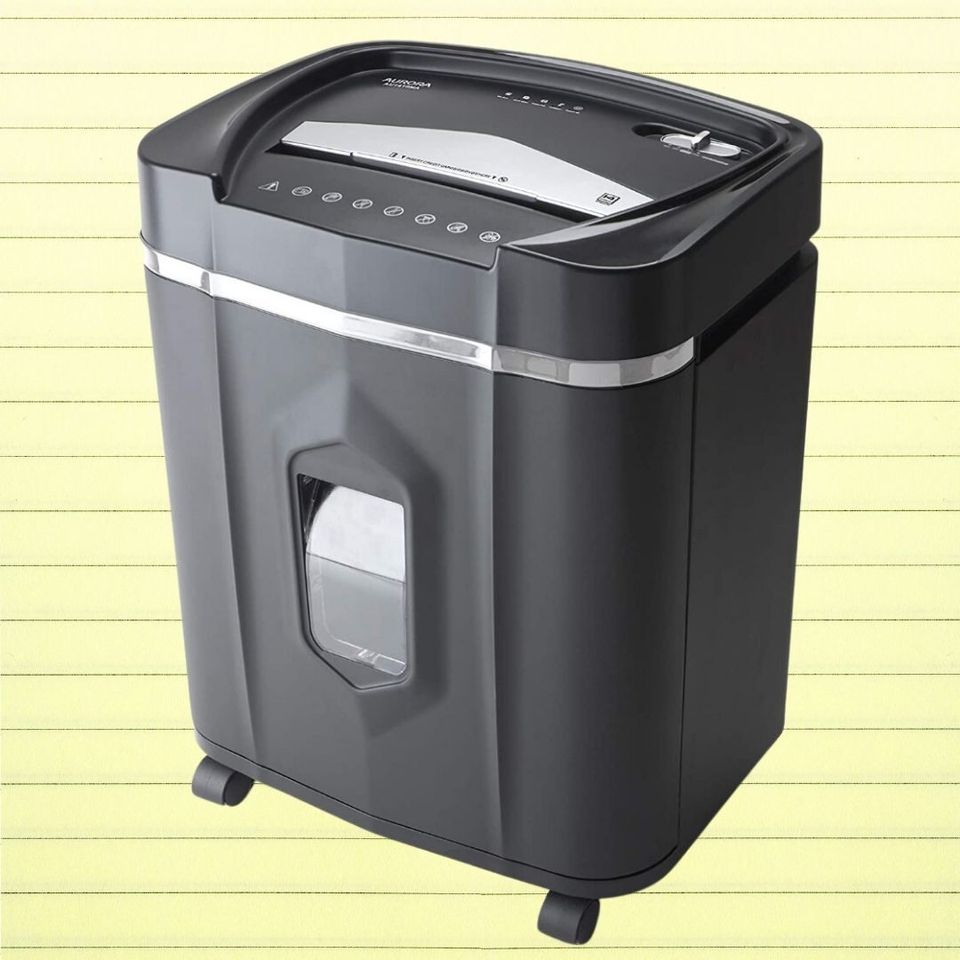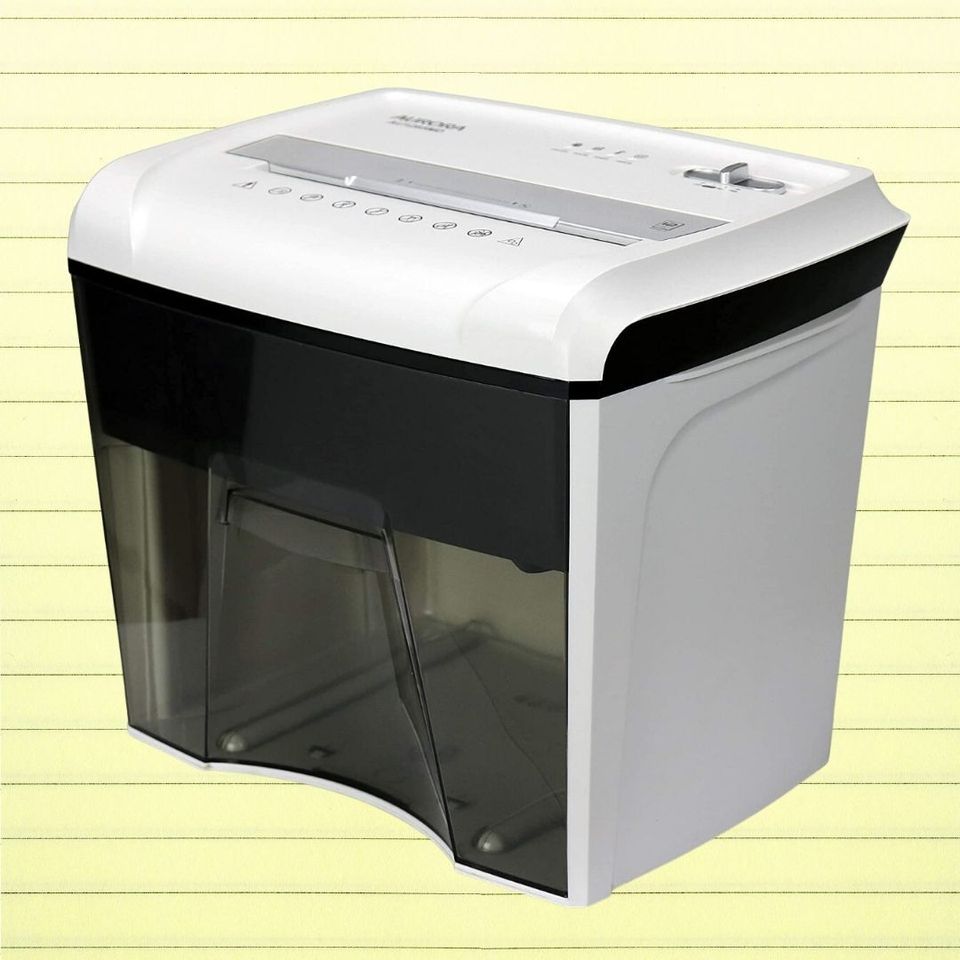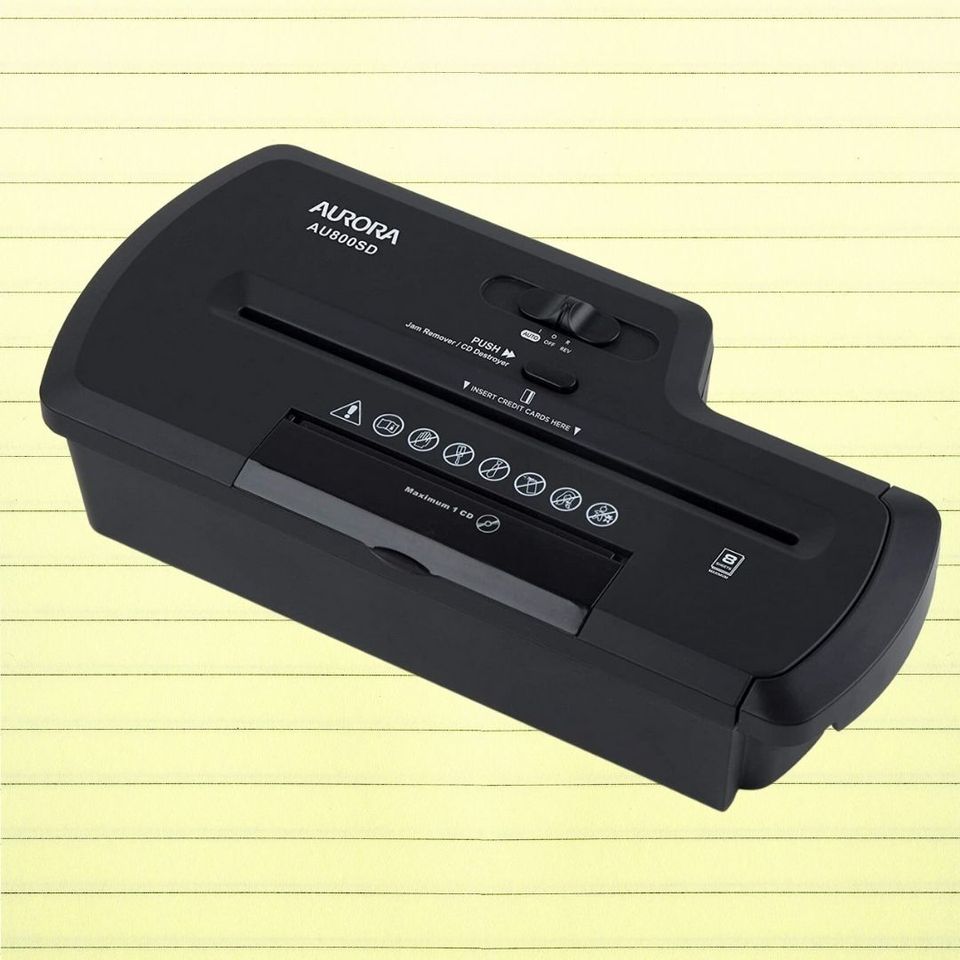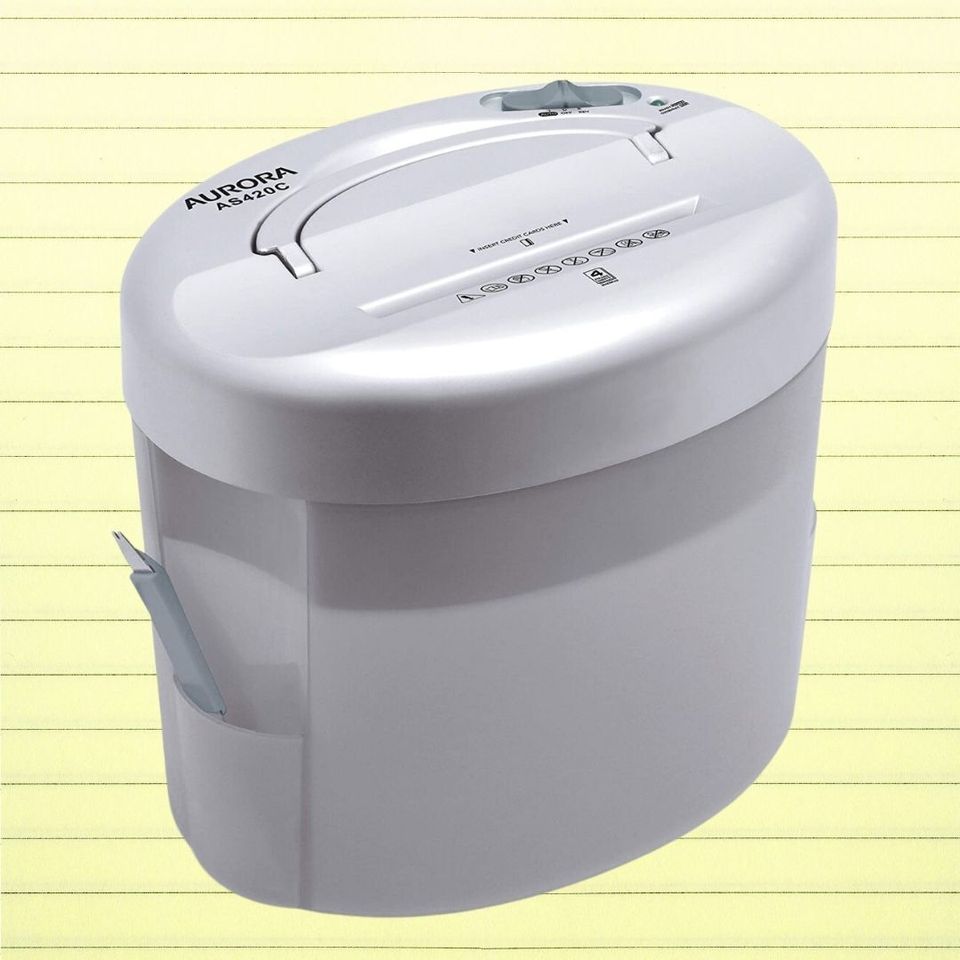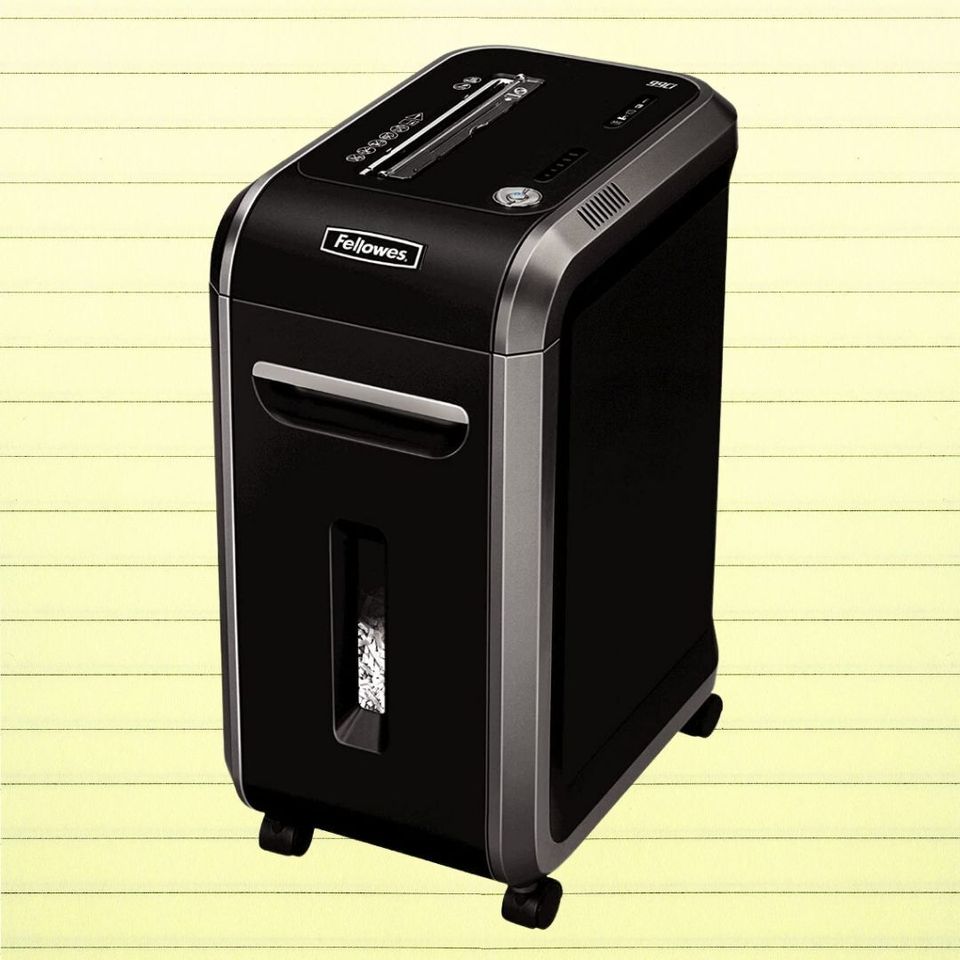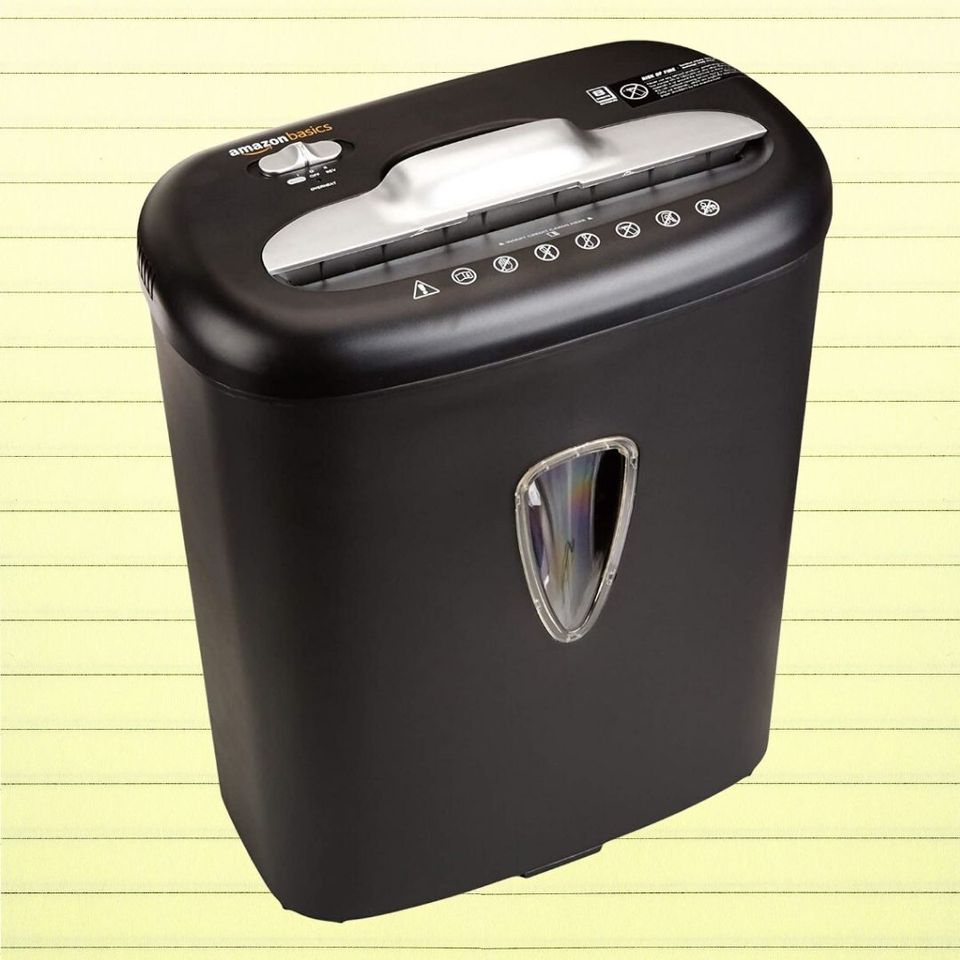
Whether you’re getting ready to KonMari the crap out of your home, you’re drowning in tax documents or just want to do a bit of spring cleaning, going through stacks of paperwork is a necessary evil. As you sift through bank statements, tax forms, bills and more, you might wonder what you really need to hang on to and what you can toss.
It might seem like a daunting task at first, but do resist the urge to trash it all and walk away. Experts gave us the lowdown on how to organize documents cluttering your home, plus how long to keep your files on hand.
Which Documents To Keep (And For How Long)
“When it comes to paperwork, people think they need to keep everything,” said Tracie Fobes, owner of the personal finance blog Penny Pinchin Mom. You really don’t, since there’s a time limit on how long most documents need to be kept on hand, she explained.
That said, some documents need to be kept longer than others. And there are a few things you should never get rid of. As you go through all this paperwork, be sure to separate it into folders according to category so you know how often to review and purge it (not to mention find things easily).
Personal legal documents: Keep forever.
Among the items you should always keep hard copies of are birth/marriage/death certificates, Social Security cards, passports, estate planning documents, deeds and wills. It’s a good idea to secure these documents in a fireproof lock box that is small and can be tucked away somewhere easy, like the back of a closet, said Kimberly Jones of L+ K Home Organization. “You want to keep items in here that you need original copies of and can not be duplicated,” she said.
Tax records: Keep 7-10 years.
According to the IRS, you should keep tax returns and related paperwork such as W-2s, 1099s and trade confirmations for a minimum of three years. However, if you want to be on the safe side, you should hang on to these records for seven years in case you end up needing to file a claim or if a reporting error is discovered.
Fobes noted that if you own a business, you might need up to 10 years’ worth of data. Confirm with your accountant to be sure.
“Usually, your accountant has these saved, but I always keep a hard copy just in case,” Jones added. Again, it’s a good idea to keep the hard copies in your fireproof safe.
Home improvement projects: Keep until you move.
Jones said that she keeps every detail of home improvement projects, such as plans and product information. “These can be easy to reference and also nice to pass along to new buyers if you were to sell your home.”
Vehicle history: Keep as long as you own the car.
It’s a good idea to hold on to any documents related to the maintenance and repair of your car. You don’t necessarily have to keep the receipts for every oil change, but definitely keep documentation of body work, electrical repairs, engine work, etc.
Additionally, if you were ever involved in an accident, you should keep documents related to the insurance claim and related repairs, said Eileen Roth, author of Organizing For Dummies. If another person was involved, hold on to this paperwork for a year.
And of course, you also want to keep a hard copy of the title (in your safe) and registration (in your glove box).
Medical billing statements: Keep until you’ve been reimbursed.
If you don’t owe any money for a check-up or procedure, you don’t need to keep the explanation of benefits that details how it was billed to insurance and paid out.
The exception is if you have a pending worker’s compensation or other medical claim. “Once the bill has been satisfied and paid, you can toss the benefits statements,” Fobes said. “If there are ongoing disputes or claims, keep all paperwork.”
Also, keep medical bills and prescription receipts until tax time if you need them for tax write-offs.
Warranties: Keep until they expire.
There’s a good chance you’ll come across some warranties for products you’ve purchased over the years. If the warranty has expired, go ahead and throw it away.
“If there are some that you still need, find the purchase receipt and attach them together so they are ready should need to file a claim,” Fobes said. If the company will allow you to submit the warranty claim electronically, you can scan both and toss the hard copies.
Credit card statements: Keep up to one year.
Many credit cards offer additional benefits such as extended warranties and purchase protection, so it’s a good idea to save credit card statements related to big-ticket purchases for a year just in case you need to go back for a proof of purchase, Roth said. However, if you have any receipts related to warranties, keep those in the warranty file and not attached to your statement.
Insurance policies: Keep until they change.
There’s no need to keep old auto, home, medical and other insurance policies, except for the most current coverage summary page, according to Bankrate. Both your agent and insurance company will keep electronic copies for years.
You should hang on to your most recent policy booklet, which is the actual legal contract. If your insurer makes any policy changes, you’ll be sent a new booklet.
Receipts: Keep for 90 days.
In most cases, Fobes said, returns are only allowed within 90 days of purchase. So any receipts for items you purchased that are outside the return window should be tossed.
The exception is receipts related to warranty claims and tax purposes, which, as mentioned above, should be attached to any related paperwork and filed to that category.
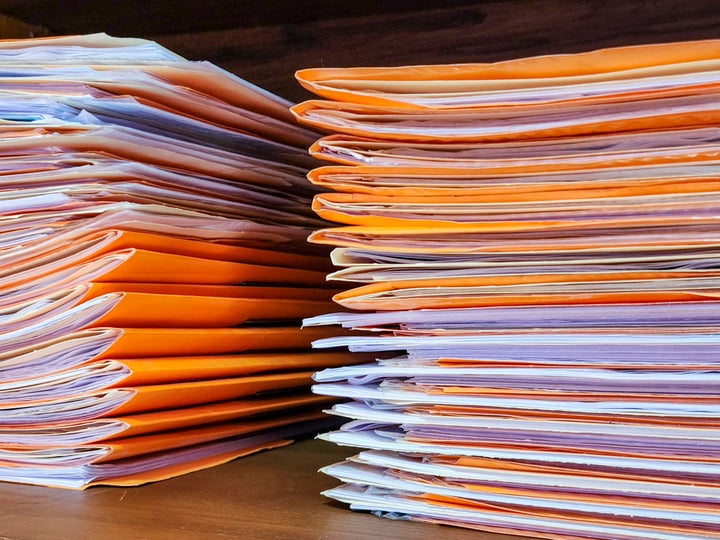
What To Shred And Toss
Aside from the important documents above, you probably have much more paper clutter sitting around that can be tossed right away. Of course, don’t simply throw these documents in the trash; shred everything that has any kind of personal information, such as your address or account numbers, and recycle the rest if you can. Or better yet, go paperless.
Financial statements
You don’t need ’em, plain and simple. “You can access them online now and download and print PDF copies should the need arise,” Fobes said.
Bills
“There’s no real reason to save your utility and service bills like Netflix, satellite, internet, electric, gas, water, trash and cell phone,” Roth said. If you rely on monthly bills to create a budget, pop the numbers into a spreadsheet like Excel or Google and then shred the bills.
Owners manuals
“Almost all manuals are available through the manufacturer’s website, so there is zero reason to keep them,” Fobes said. “Toss them all.”
Anything with your name and personal information
As noted above, anything with your name and address, subscription information, phone number or other identifying information should be shredded before you throw it away or recycle it.
How To Eliminate Paper Clutter For Good
“The best way to eliminate paper clutter is to cut it off at the source,” Jones said. She explained that the main source of paper clutter is usually the mail, so she recommends a process for identifying where it all belongs as soon as it comes through the front door. “I classify as either to read, to do, to pay or to file,” she said.
And though there are some documents that can only exist as hard copies, almost everything can be saved digitally these days. If you don’t already receive it electronically, documents can easily be scanned and stored on a hard drive or uploaded to the cloud.
“To ensure that I am not at the mercy of my computer breaking down, I save everything into Google docs,” Jones said. “I maintain folders in my drive to make it easy to keep organized.”
No matter where you save your documents, you should have two key goals for each file: That it’s easy to find and that it’s well-protected.
Be sure to follow a detailed and consistent file naming strategy. For example, you might save all tax forms with the category, exact name and year, so it looks something like this: “Taxes_Form_1099_2018.”
Also make sure that you use a strong password to protect all your devices and cloud accounts so that if your laptop or phone falls into the wrong hands, none of your sensitive information is easily accessible.
Need a paper shredder? Here are a few highly-reviewed options from Amazon:
This professional-grade machine shreds documents in high-security micro-cuts, the smallest type of shred available. It has a 12-sheet capacity as well as the ability to destroy DVDs, credit cards and even paper clips that you forget to remove. You have the option to continually run the machine for up to an hour, and can easily clear up paper jams using the auto-reverse feature. The base, which comes on rolling casters, can hold up to 300 sheets worth of shreds and pulls out like a drawer when it's time to be emptied.
This compact shredder is capable of micro-cutting 12 sheets of paper at a time, along with credit cards, DVDs, small paper clips and staples. It's small enough to fit on a desktop or end table, yet the pullout receptacle has a 1.8-gallon capacity for less frequent and more convenient emptying. It also promises nearly quiet operation.
If you'd rather shred your documents directly into your recycling bin, this attachment can be a good option. It features an extendable arm so it can fit securely over most wastebaskets and a manual reverse setting for clearing paper jams. It's capable of shredding eight sheets of paper at a time and can also handle credit cards and DVDs.
The most compact option on this list is this 1.32-gallon desktop shredder that destroys up to four documents at a time using the crosscut method, which cuts paper into smaller pieces compared to traditional strip-shredding. It can shred credit cards too, and the handle makes it easy to lift away the shredding component to empty the receptacle.
The Fellowes 9-gallon-capacity Powershred claims to be jam-proof due to an integrated mechanism that automatically detects and powers through a difficult job rather than trying to reverse the operation. The machine, which crosscuts up to 18 pages, can be continuously run for 30 minutes at a time and is compatible with DVDs, credit cards, junk mail, staples and paper clips. You also don't have to worry about little ones or animals getting hurt thanks to a safety feature that senses when hands get too close to the opening.
This 4.1-gallon-capacity shredder has over 152,330 five-star-ratings and is a great standard option for all your paper shredding needs. It offers security-level crosscuts, a credit card and DVD destroy option, and can shred up to eight pages at a time. It also has an auto-shut-off feature to prevent the shredder from overheating.
HuffPost may receive a share from purchases made via links on this page. Every item is independently selected by the HuffPost Shopping team. Prices and availability are subject to change.
